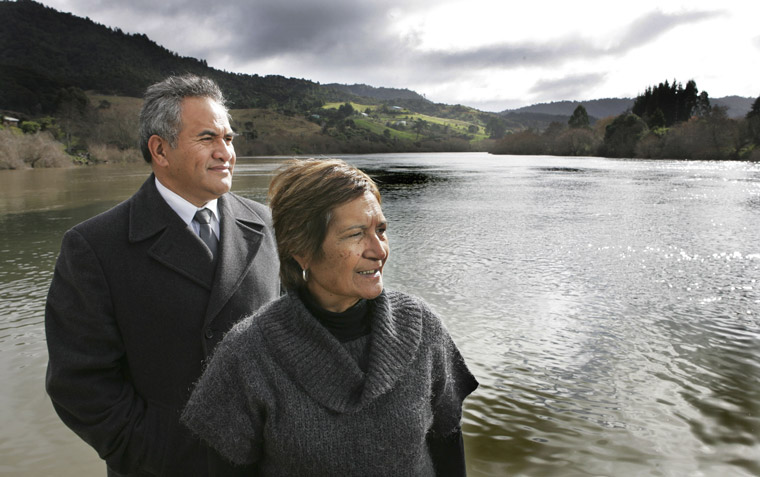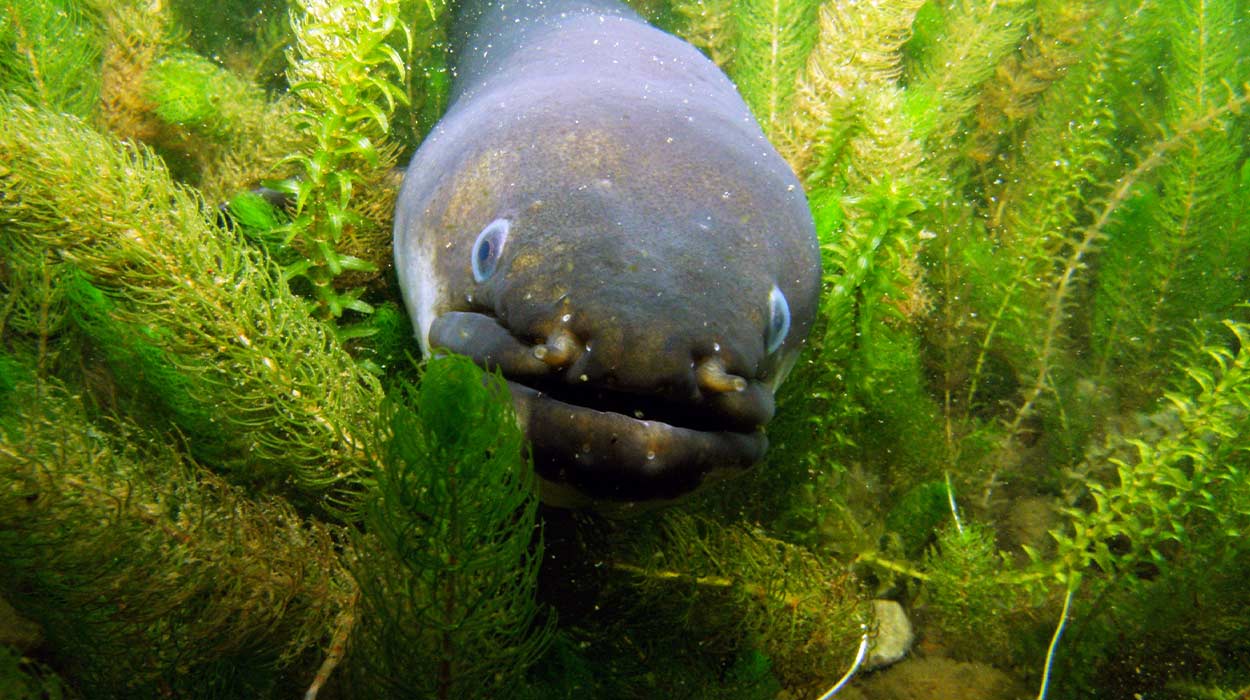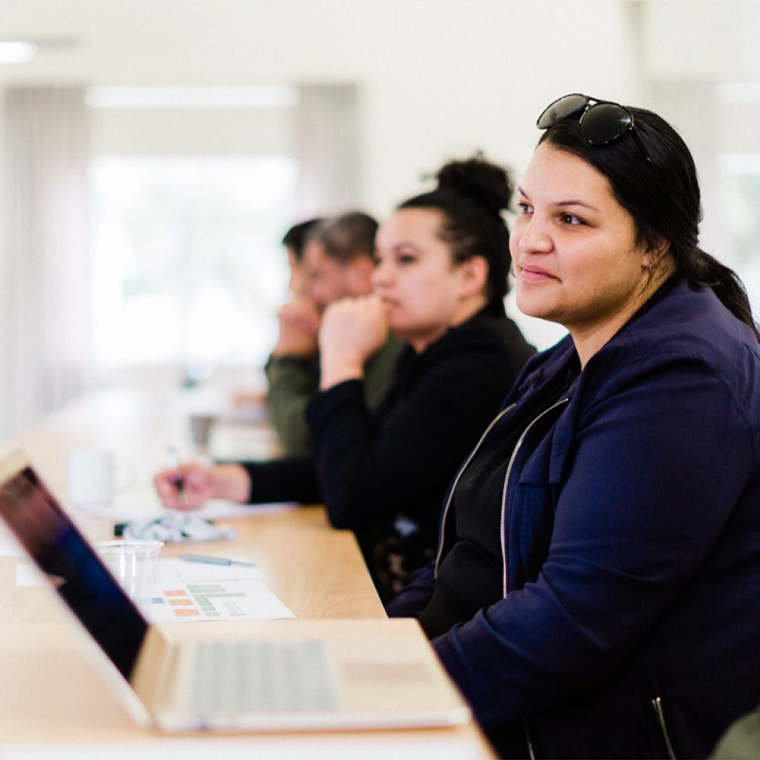Chapter four: Kaitiakitanga – role on the river
Chapter 4
Kaitiakitanga – role on the river
When Kiingi Tuheitia Pootatau Te Wherowhero VII declared a raahui over the Waikato and Waipaa rivers, it was made as a kaitiaki of these important waterways.

Sustenance defines
river connection
The raahui, well publicised by the media, was put in place to allow the wellbeing and spirit of the rivers and waterways to regenerate and rejuvenate.
Under the Waikato River Settlement, tribal negotiators successfully sought redress through a vision and strategy titled Te Ture Whaimana that focused on: restoring and protecting the health and wellbeing of our tupuna, te awa o Waikato.
The raahui aligned with Te Ture Whaimana – a remedy to improve the management of freshwater and ensure all Iwi, water users and the community share a desire for the continual improvement of the quality of freshwater in the Waikato over time. The raahui, which began in April and ended in May, prohibited food gathering and all recreational activities on the waterways and was largely adhered to.
However, the tribe’s battle to preserve the mana of the river is being tested by Auckland’s demand to draw millions more litres of water from the Waikato River to resolve its current water crisis.
Waikato faced similar demands in 1994 when Auckland’s Watercare Services Ltd wanted to pipe Waikato River water to Auckland to resolve a drought crisis.
Back then the tribe’s principal negotiator Sir Robert Mahuta and a group of kaumaatua including Te Kaapo Clark from Maungatautari marae and Tahau Cooper from Te Awamaarahi marae told the Environment Court hearing that their ancestral waterway had been desecrated by all users of the river and as kaitiaki they were committed to protect it.
Tahau Cooper told the hearing that he was opposed to providing consent as he was raised near Tuakau to ensure the river will be dependable for ever.
That dependability is at risk and Waikato is concerned by the increasing demands on the river.
Auckland Council currently has consent that allows it to take 150 million litres each day, plus 15 million extra due to the drought. Its request to take an extra 200 million litres of water a day from the Waikato River will now be heard by a board of inquiry. In the meantime, Hamilton City Council has done a deal with Watercare to give it 25 million litres a day from its unused water allocation while it waits on the outcome of the inquiry.
There seems to be more twists and turns yet to unfold regarding this Auckland water crisis, however, the tribe’s new leadership is committed to protecting the river and will demand their voice is heard as enshrined in the Waikato River Settlement Act.

Sustenance defines the physical and spiritual connection between the people of Waikato and their tupuna awa, the Waikato River.
The tribe’s name is derived from the river and is an essential part of our identity. Its lifeforce sustains ours, the spirits of our tupuna and the traditions we continue to observe. In ancient times it provided food and water, and a means of transport and trade. Its prestige reflected the mana and mauri of the tribe, embedded in the proverb:
He piko, he taniwha, he piko, he taniwha, Waikato taniwha rau – At every bend a guardian, Waikato of a hundred guardians.
The claim to the river was tied to the illegal confiscation of 1.2 million acres of tribal land. With the confiscation of land, control of the river was also ceded.
The Crown forces attacked by both land and water with armed steamers and barges ferrying supplies to colonial troops on the Waikato and Waipaa rivers.
Dr Dean Mahuta says the invasion and ensuing war irrevocably changed the world of the tribe.
In his thesis on the river and Waikato identity, he states the tribe turned to the river for survival. Landless and homeless, they had nothing else. Fortunately the river was bountiful with eels, whitebait, freshwater crayfish, mullet, freshwater pipi, mussels and watercress.
Today, these foods have largely disappeared.
Eels are still present but under increasing pressure with migratory patterns and breeding hampered by pump stations and dams. Introduced Koi carp have also infested the river since 1983, muddying the water and destroying native plant and fish habitat.
Sir Robert Mahuta laid the groundwork for the river claim. This work was completed by his wife, Lady Raiha, and former politician and Tekaumarua chair, Tukoroirangi Morgan. The Waikato River Settlement with the Crown was signed in 2008 on the river bank at Tuurangawaewae marae, before Kiingi Tuuheitia Pootatau Te Wherowhero VII.

New era of co-management
Negotiations between Waikato-Tainui and the Crown ushered in a new era of co-management of the Waikato River.
Earlier attempts by Waikato to regain its kaitiaki role over the river were largely ignored, including a petition to Parliament in 1929 by Te Puea Herangi seeking the restoration of the tribe’s customary fishing rights.
“The backbone of the settlement ensures our people have a voice, so that whatever decisions we make are backed up by legislative power.”
Tukoroirangi Morgan
The Waikato River settlement legislation also brings together regional councils and commercial users under a co-governance model with Waikato-Tainui.
“We can’t clean this river up if it’s just us, so everyone has got to be on board,” says Morgan.
“The challenge is to change all users’ attitudes to the river. It’s going to take at least two generations to clean it. But in 25 years we want to see a change in behaviour in the way we treat the river, to improve its health and wellbeing.”

Negotiating the Waikato River claim was unchartered waters for the Crown and Waikato-Tainui.
But the work was in keeping with its position as the first tribe to directly negotiate a Treaty of Waitangi Settlement with the Crown.
Waikato-Tainui Lands Trust Chief Executive Officer Donna Flavell was the team leader that provided support to the co-negotiators at the time.
Donna says the River Settlement was unique and focused on how to preserve the mana of the river rather than ownership.
“We’ve always said we don’t need a piece of paper to tell us that we own our awa. If we could manage it, it was akin to ownership.”
As Waikato achieved a relativity mechanism in the 1995 Waikato-Tainui Raupatu Settlement that future-proofed that pioneering settlement, the River Team secured a powerful mechanism called Te Ture Whaimana, a vision and strategy for the river that cuts across Resource Management legislation, Crown agencies and territorial authorities.
Since the settlement, the government has reviewed co-management arrangements and in December 2009 a revised Deed of Settlement was mutually agreed.
The Waikato River Authority was formed which has 50/50 decision making with iwi and charged with co-ordinating the clean-up of the river. It received $220 million and over the past 10 years has allocated about $70 million dollars to a range of projects based on its funding priorities.
Donna says the co-management role recognises other iwi from its source at Taupoo to Port Waikato and makes the Crown accountable also.
“In settlements, the Crown usually says here’s your settlement, here’s the puutea to fix all the problems we created. But we say Crown you have created this mess and polluted the river you can stay and help us clean it up.”
“Noo taatou te awa. Noo te awa taatou. E kore e taea te wehe te iwi o Waikato me te awa. He taonga tuku iho naa ngaa tuupuna. E whakapono ana maatou ko taa maatou, he tiaki i taaua taonga moo ngaa uri whakatupu.”
The River belongs to us just as we belong to the River. The Waikato tribe and the River are inseparable. It is a gift left to us by our ancestors and we believe we have a duty to protect that gift for future generations.
Sir Robert Te Kotahi Mahuta

Analysing data for future generations
One of the Waikato River Authority funded projects is the Trap and Transfer Feasibility and Kaitiaki Development programme. It’s one of three river restoration research projects funded by the Authority that the Waikato-Tainui College for Research and Development is conducting.
Researcher Ihipera Sweet has combined her law degree and research skills to oversee its aim of creating safe passage to boost the eel fishery in the Waikato River.
It studies the comparative cost-benefit of implementing a trap and transfer programme for eels and educates tribal members about combining traditional fishery practices with scientific research.

The programme has received $110,000 from the Waikato River Authority and also secured support from the Waikato Regional Council.
But there are challenges. Migrating tuna (eels) still have to negotiate and survive a network of stopbanks, pump stations, floodgates and detention dams. These are government installations to protect communities from flooding. .
The Waikato Region has the largest number of pump stations. Heavy rain that triggers eel migration also prompts the pumps to operate, creating a recipe for disaster. Almost all female eels measuring more than 60cm in length die if they travel through the stations. They also hinder the passage of eels migrating upstream..
Ihipera Sweet says they want to reduce that mortality rate.
“If they can’t migrate upstream or downstream then we are technically reducing our tuna population.”
While many marae and whaanau have their own eeling experts, complementing those skills with scientific research is the ideal.
“Implementing the research side means recording and analysing data for future generations.”
Notes and credits
Waikato-Tainui have chosen to use double-vowels rather than macrons in this feature.
This story was originally published on the Waikato-Tainui Endowed College for Research and Development website Raupatu
‘Kaitiakitanga – role on the river’ image: Te Anga Nathan
‘Sustenance defines river connection’ image: Stuff Limited
‘New era of co-management’ image: Te Anga Nathan
‘Analysing data for future generations’ image: Anna Barnett, CC BY 2.0





